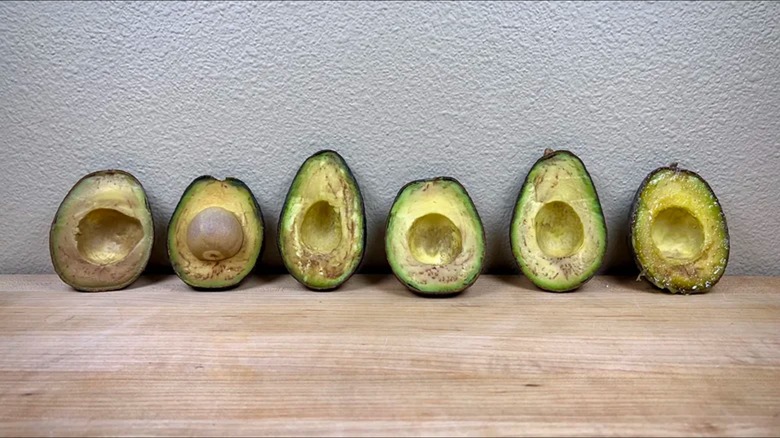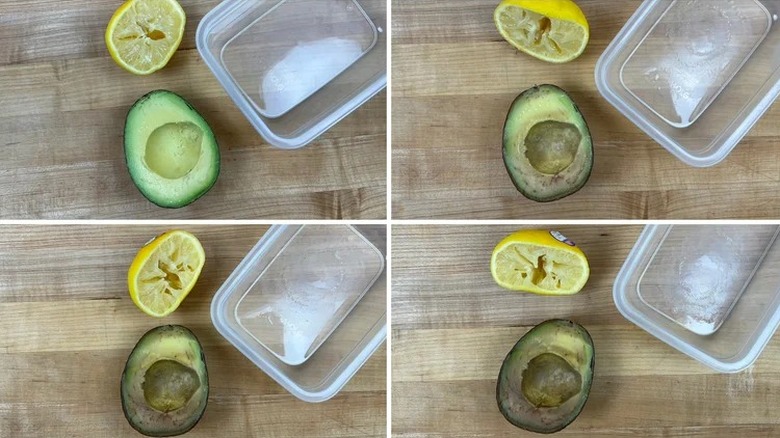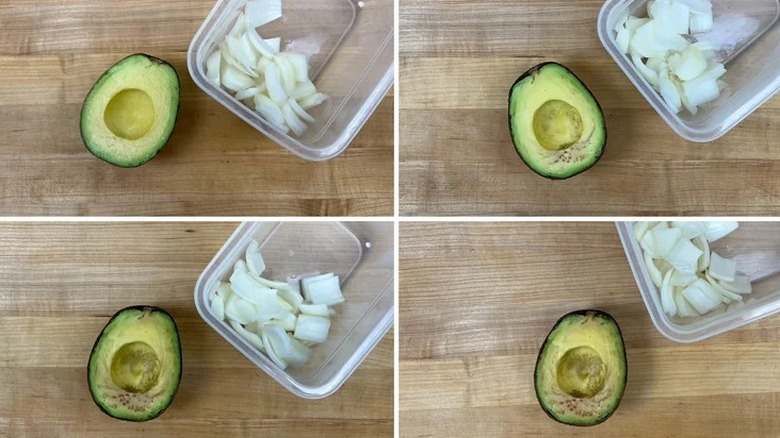The Absolute Worst Way To Store Cut Avocado
They say time waits for no one, and this clichéd yet profound phrase can also be applied to your favorite produce. Take avocados: This popular fruit (yes, avocados are considered fruit, per Harvard University) is just as nutritious as it is tasty, but it has a real problem with oxidation. Once an avocado has been sliced, air exposure immediately begins triggering lots of chemical reactions that diminish color and texture quality. While this natural process doesn't usually impact food safety, it has a huge effect on palatability. As a result, humankind is on a seemingly endless quest to preserve cut avocados.
Fortunately, the great minds at Tasting Table conducted some very important research to determine which avocado storing method is the most effective. In the course of discovering the best method to prolong the lifespan of a cut avocado, the absolute worst method was also stumbled upon. Although lemon juice is frequently touted as a way to stop fruit from turning brown, it appears that it's far less effective than claims would lead you to believe. This method should be avoided at all costs unless you like your avocados to resemble lumpy brownish goo.
Lemon juice cannot save avocados from the ravages of time
Avocados and other fruits fall victim to a process known as enzymic browning, which is just a fancy way of saying oxidation. When exposed to the air, enzymes (also known as proteins) in produce cause it to become over-ripe at an accelerated pace. The acidity of lemon juice counteracts enzymic browning, which implies if you rub your cut avocado with lemon juice it should maintain its pleasing green hue and toothsome texture for longer.
In practice, however, this method is not nearly as effective as one might think. Based on Tasting Table's test, preserving avocados by rubbing them in lemon juice was the least effective method, especially when compared to top picks like storing the fruit in olive oil or using a reusable plastic storage pod. After three days, the lemon-rubbed avocado looked decidedly worse for the wear, despite being stored in the refrigerator in an airtight container. And while other preservation methods weren't quite as disastrous, they still returned less-than-pleasing results.
Other avocado storage methods to avoid
The same smelly sulfur compounds in onions that make you cry when cutting them are also said to preserve cut avocados when stored together. Accordingly, this method requires chopping some onions and placing them into a sealable container with your cut avocado. It was relatively successful, albeit not as effective as the methods involving olive oil and storage pods. It did have one drawback, which is that it infused the avocado with a distinct onion flavor. While this isn't the end of the world for people who enjoy onions, it does detract from the fresh flavor of avocados.
Wrapping the cut avocado in beeswax paper also led to a bit of disappointment, although it was mildly successful in slowing the browning process. The real issue was the difficulty of wrapping the fruit in beeswax paper, which needed to be warm to create a tight seal. After spending some time in the cold refrigerator, the beeswax paper proved challenging to warm up again (which could be achieved by rubbing it between your hands). As a result, this method was too unwieldly when compared to its lackluster results.
Static Media owns and operates Tasting Table.


